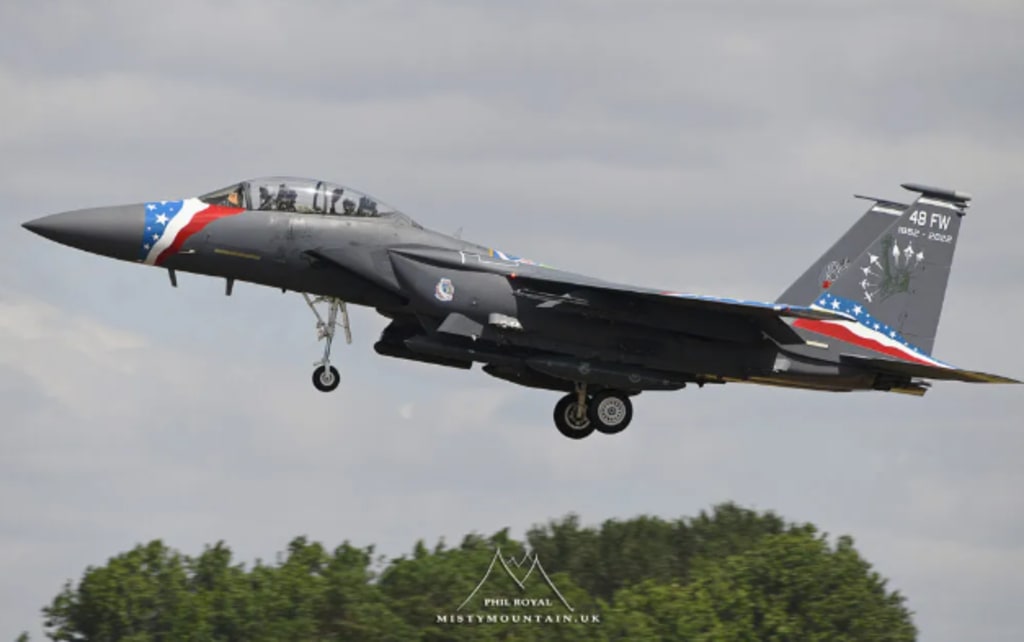The History and Accomplishments of the General Dynamics F-16: The Rebirth of the Dogfighter
General Dynamics F-16

The General Dynamics F-16 Fighting Falcon is a single-engine supersonic multirole jet fighter aircraft, originally developed by General Dynamics F- 16 for the United States Air Force (USAF). The F-16 quickly became a favorite among pilots due to its highly maneuverable design, excellent performance and reliability. In its initial years of service, it became the most prolific and versatile fighter in the USAF inventory, and was used in a variety of roles, including air-to-air combat, close-air support, and reconnaissance.
Since then, the F-16 has been used by the United States and its allies in a wide range of conflicts around the world, from the Cold War to the present day. The F-16 has also been exported to numerous countries and is used by the militaries of dozens of countries. This article will explore the history and accomplishments of the F-16, from its development in the 1970s to its present-day role as a formidable dogfighter.
Origins of the F-16
The F-16 was the result of a design competition between several aircraft manufacturers for a light fighter aircraft to replace the Air Force’s fighter fleet. The contract was awarded to General Dynamics in 1975, with a plan to produce 10 test aircraft and 339 production aircraft. The initial plan was to develop a single-engine fighter, but during the design phase, General Dynamics engineers decided that a twin-engine configuration would be better suited for the proposed aircraft’s weight and performance.
The Air Force approved the change in design, and the F-16 Fighting Falcon was born. The lightweight and highly maneuverable F-16 was first introduced to the world in 1980, at the Farnborough Air Show in England. The new aircraft was a stark contrast to the lumbering, heavy fighters that had dominated air wars in the past. The F-16 was designed to be agile, easy to fly and maintain, and easy to use in close combat. It was also designed with a high level of automation so that the pilot could focus on combat. These features made the F-16 a highly desirable aircraft to pilots.
Development and Design of the F-16
The F-16 was designed to be a lightweight, agile, and highly maneuverable supersonic multirole fighter aircraft. The F-16 was designed as a lightweight aircraft, with a large wingspan and minimal use of materials that increased the weight of the airframe. The F-16’s wing was fitted with leading-edge extensions for improved low-speed performance and reduced drag at high altitudes. For high-speed performance, the F-16 was designed with a cropped delta wing with a cranked trailing edge; a configuration that produces maximum lift and low drag at high speeds.
The F-16 was designed to operate from small and unimproved airstrips, with a configuration that included robust landing gear, large tires, and a low-pressure hydraulic system. The F-16 also included a sag-phasing gear retraction sequence to reduce the chance of foreign object damage during touch-and-go landings. The F-16’s fuselage was fitted with two General Electric F101 turbofan engines. These engines were designed to be simple and reliable, with a minimum number of parts and low maintenance requirements.
Combat History of the F-16

The F-16 went into service with the Air Force in 1980, when the first operational squadron was established at George Air Force Base, California. The F-16’s initial role was to serve as an air-to-air fighter, and many of the early engagements were over the Gulf of Sidra, where the General Dynamics F- 16 would come into direct contact with Libyan Air Force aircraft that were attempting to challenge the United States right to patrol the region.
Early in the F-16’s service, it was discovered that the aircraft was not effective in air-to-ground attacks, as its computerized sensors, designed for air-to-air combat, caused erroneous readings when used for ground-attack missions.
Over the next few years, the F-16’s capabilities were expanded to include ground-attack missions, including close-air support of ground troops, and reconnaissance. The F-16’s versatility and maneuverability allowed it to handle the many tasks that were required of the aircraft.
Accomplishments of the F-16
The F-16 is credited with several accomplishments over its long career, and has earned many distinctions and honors throughout its service. The F-16 is credited with shooting down 25 aerial enemy aircraft in air-to-air combat, as well as destroying over 55 ground targets.
The F-16 was the first fighter aircraft to achieve over 1,000 kills, as reported by the USAF. It also has the honor of being the only fighter aircraft to be fired upon by an enemy without ever having fired a shot in return. One of the most unusual accomplishments of the F-16 is that it is the only fighter in history to have had a bird strike that caused death and injury. On November 16, 1986, an F-16 was preparing to land at Homestead Air Force Base, Florida, in the wake of Hurricane Eloise.
The storm had caused significant damage to the surrounding area, and a large flock of Brazilian parrots had taken refuge in the trees near the runway. During the landing approach, the pilot heard a loud thump, followed by a loss of control of the aircraft. The aircraft had been struck by a Brazilian parrot, causing the loss of control and resulting in the death of the two pilots onboard.
Exports of the F-16
Since the F-16 was first introduced in the 1980s, it has been exported to many countries, serving in both air forces and those of allied countries. The F-16 has been exported to more than 30 countries and serves in the air forces of 27 nations, including the United States. The F-16 has served in many major air campaigns, including the Gulf War, the Kosovo War, the Iraq War, and the War on Terror. The F-16 was used in a variety of different roles, including air-to-air combat, ground attack, and reconnaissance. The F-16 has proven to be a very versatile and capable aircraft.
The technology of the F-16

The F-16 has been in service for over 40 years and has since been replaced in the Air Force’s fleet by the newer F-35. Despite being an older aircraft, the F-16 continues to be a formidable dogfighter and a capable multirole fighter. The aircraft is equipped with a variety of sensors and weapons, including AN/APG-80 AESA radar, an internal M61 Vulcan 20mm rotary cannon, and AIM-9 infrared-guided air-to-air missiles. The F-16 can also be equipped with a wide variety of external weapons, including unguided and laser-guided bombs, cluster munitions, JDAMs, AGM-88 HARM missiles, and Shrikes. The F-16 also features a large internal fuel capacity and a robust flight control system.
Modern-Day Use of the F-16
The General Dynamics F- 16 continues to serve in many air forces around the world, including that of the United States. The F-16 serves in air forces around the world, including that of the United States. It has been used in every major American conflict since its introduction in the 1980s, including the Gulf War, Kosovo, the Iraq War, and the War on Terror. The F-16 continues to be used in air-to-air combat, ground attack, and reconnaissance missions. It was recently used in several combat missions against the Taliban in Afghanistan.
The F-16 continues to be a very capable supersonic fighter and is expected to serve in the Air Force’s fleet for many more years to come. The F-16 is expected to be operated well into the 2030s, as the Air Force works to replace its aging fleet of F-16s with the newer and more advanced F-35. The F-16 has proven itself to be a very capable aircraft and has been used by many countries around the world for decades.
About the Creator
planehistoria
PlaneHistoria is a resource documenting a variety of aircraft from the terrifying contraptions of the past to the amazing and bizarre aircraft of today, such as the General Dynamics F-16.






Comments
There are no comments for this story
Be the first to respond and start the conversation.